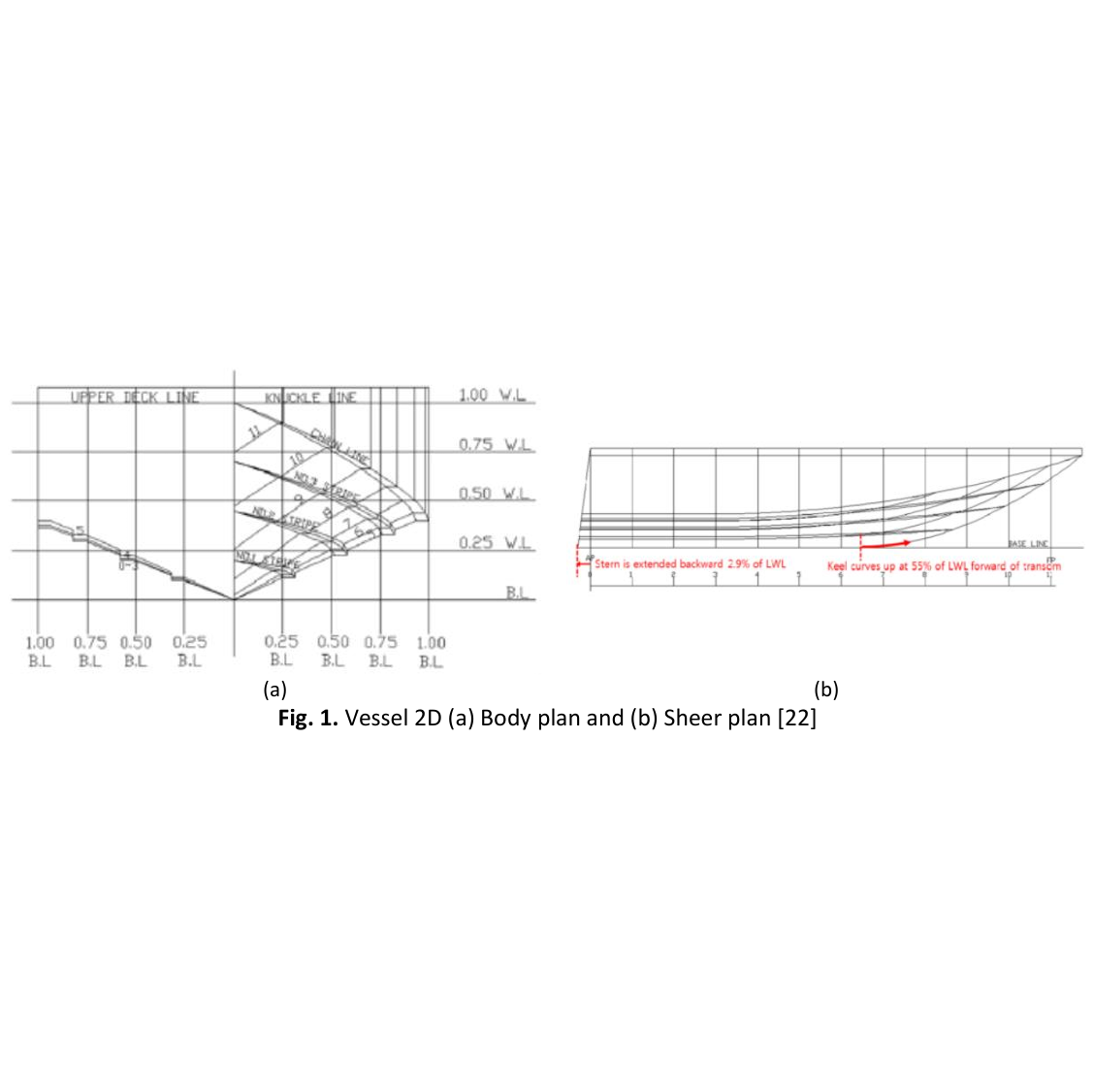Enhancing Efficiency in Deep-V Planing Hull Ships: A Study on the Design of Spray Strips to Minimize Resistance
DOI:
https://doi.org/10.37934/arfmts.122.1.175188Keywords:
Spray strips, WSA, planing hull, CFDAbstract
Spray strips are deflectors installed on the hull to decrease the wetted surface area (WSA). By reducing the WSA, the overall resistance of the ship is lowered because it lessens the friction of water flowing against the hull. The purpose of this research is to predict the function of spray strips in an effort to improve ship performance. In this study, the numerical methodology employs the Finite Volume Method (FVM) along with the Reynolds-averaged Navier-Stokes equation (RANS) for resolving fluid dynamics issues. The modeling of the two-phase flow involves the utilization of both the Volume of Fluid (VOF) model and the Eulerian model. The results of this study show that spray strips can reduce the total resistance by about 2.7%. Increasing the number of spray strips can reduce the drag shear value by 3.5%. Spray strips are effective in reducing total drag when the Froude number (Fr) is greater than 1 or when the vessel is in the planing phase. The profile shape of spray strips with dimension 2:1 shows the best performance on ship resistance.
Downloads

































